We’ve all experienced great customer service and unfortunately we’ve all experienced the bad kind as well, and as studies have shown people are more likely to buy from organisations who provide a better service than a not so good one.
So what does this all have to do with employee engagement? Well, highly engaged teams deliver better service and organisations who can deliver employee engagement through training and development will not only benefit through better customer retention/repeat business, but it will also help to secure the fortune of the organisation moving forward over the years - from building the next generation of leaders to boosting internal performance.
In this guide we will dig deeper into employee engagement, what affects it, the importance of staff training and how training and development develops staff engagement.
Factors that influence employee engagement
Employee engagement is how much an employee is motivated by, passionate about and invested in their work. Employee engagement has much more to do with an individual’s own investment and emotional connection to the organisation they work for rather than job satisfaction which is focused on performing the job to the best of their ability without necessarily investing everything into the role.
Employee engagement is an approach that fosters and creates optimum working conditions that enables staff to willingly commit to the organisation’s goals and values while enhancing their sense of their well-being.
Employee engagement can be based on 9 factors:
- Value and purpose
- Communication
- Wealth and wellness
- Workspace/environment
- Well-defined roles
- Relationships
- Recognition and incentives
- Buy-in from managers
- Personal growth and development
It is not uncommon for many to mix-up employee engagement with employee satisfaction or even employee happiness. Engagement is purely focused on an individual’s own investment and emotional connection to the organisation they work for whilst the other two are about what they are receiving from the organisation in a variety of different ways - from perks to job opportunities.
Whilst there have been many different character types and studies over the years, one difference that has emerged is that the millennial office/work culture is interested in seeking out meaningful relationships with their work vs. their contemporary generations before or even after. Gen Xers have traditionally been more in favour of developing their structural role within the workplace, climbing the ladder or having more investment in their training and development to move forwards in their career whilst Gen Y have shown to be more interested in having roles that fill their emotional needs first.
This is why research has indicated that if employers want to retain staff, especially those who are newer to the workforce, they must tap into the employee’s emotional attachment to the work, providing a meaningful work experience.
Why is staff training so important to this conundrum? We are going to take a closer look in the next section.
The importance of staff training
We have all felt that in our line of work, we needed to start somewhere, and when you are new to a business or even at the very beginning of your work/life career, we have felt lost or even considered if we were right for the role, that’s why staff training is an important element in any new starters life.
Ongoing training and development is however an essential part of an employee’s working life and so much so that employees thrive when working in environments that provide resources for development.
Being able to grow both personally and professionally is one of the key factors in employee engagement. It’s become one of the most important factors for many who have struggled to stay in a role or within a company for many years. If an employee feels like they are not being taken care of from a developmental perspective, they can feel like they are surplus to requirements for both the team they work in and the organisation that they are working for.
This is why it is equally important to have employees who can see a career path and personal development opportunities as part of their role in the business. They are more engaged and less likely to seek alternative employment as a consequence.
Making learning and development a key part of an organisation’s mission to better improve engagement is essential. Not only does this make your organisation more attractive to new employees but, it can also drastically improve staff engagement and drive wider motivation which can in turn help the company hit its goals and productivity measures.
When looking at training, you also need to consider why training is important for the future of your organisation - and it should include leadership. You are of course developing the future of your organisation through training and development, it’s why having an eye on who can take the organisation further in the years to come is an essential step forwards.
Finally, it goes without saying, the reason why you should develop and train your staff is so that you have the right set of skills and capabilities to achieve company goals and support future business development plans. Without these, your organisation will struggle to develop and grow and equally, compete with others.
How training and development drives employee engagement
In one study, 80 percent of surveyed employees said that learning and development opportunities would help them feel more engaged at work. This is further supported by data which shows that a more engaged workforce is a better customer service engaged workforce by nearly 90 percent.
Therefore it is important that organisations can focus on providing training and development opportunities for their staff which will be boosting employee engagement - which makes a huge contribution toward growth and the attainment of company goals and objectives.
What are these perceived and actual benefits? Here are just a few:
Retain employees
It goes without saying that the better an employee feels in their role and in their position, the less likely they are to jump to another company or worse, your direct competitor. Employee engagement helps to build loyalty towards an organisation as there is an investment in the individual which can help further their careers.
One survey indicated that 94% of employees said that “they would stay at a company longer if it invested in their career development.”
Not only does a training and development resource help to retain good employees, it helps to build and expand knowledge and refine skills which in turn can help a business’s employee value proposition.
Drive motivation
By investing in training and development, your organisation is sending a clear signal that you value your employees as individuals as well as caring about them and their personal development. When employees understand and feel valued, they have the opportunity to not only develop their abilities and skills through work and training but it can provide a motivation boost as they’ll likely be more engaged with their jobs and willing to work harder to not only to support their own careers but your organisation’s too.
What also matters is the types of training you offer that can influence their motivation as well. For example, you could provide training that helps individuals understand how their roles fit into your business’ purpose, mission and goals. Gaining a true understanding of how their jobs contribute to your business, your employees will have a real sense of purpose at work that will drive their day-to-day efforts.
Develop future leaders
We’ve touched on how training and development can help engage employees and equally, help to carve out the future generations of leaders. Having training that is specific in this area is going to greatly help and develop the future leaders of your organisation moving forwards.
What is important to remember is that organisations need to forecast their anticipated staffing and skills needs and aim to fulfil these through training and development. What is lacking? What is going to help develop your future workforce and leadership? What changes can be anticipated and managed in the structure of your organisation? These are important questions to ask before implementing any specific training in this area.
Empower employees
The more engaged the workforce, the more empowered they feel. There is a greater sense of having the confidence to succeed and to grow into not only the role, but the future of the organisation as well.
Staff who feel empowered within the workplace will be more effective at influencing other employees and gaining their trust. Developing a greater sense of autonomy, value, and confidence within their work is a by-product of this development. Employee autonomy is a benefit in all of this as well, as any employee who feels that they can make their own decisions on the work they do as well as part of a team is a strong character to have in any organisation.
Develop workplace relationships
Workplace relationships and communications can be enhanced through training and development opportunities. These improved relationships can help contribute to the wellbeing of staff as well as develop engagement.
Providing opportunities to help employees to explore new topics and refine their skills and expand their knowledge can help your team members bond with each other.
Research has shown that peer collaboration is actually a preferred method of learning and sharing ideas or solutions to problems helps to round out the learning experience for everyone involved. Learning from each other’s strengths not only leads to a more well-rounded workforce, but those bonds can also improve retention and engagement.
Boost performance
Another very natural benefit of giving your employees access to learning tools is better performance.
By refining their skills and expanding their knowledge, your employees will be better equipped to do their jobs and may even find new ways to enhance their efficiency too. This, coupled with our earlier points about learning having a positive impact on employees’ motivation and confidence, means that their performance will be better in their jobs too.
Conclusion
Highly engaged teams deliver better service and organisations who can deliver employee engagement through training and development will not only benefit through better customer retention/repeat business, but it will also help to secure the fortune of the organisation moving forward over the years.
From better staff retention to improved performance and even developing future leaders, driving employee engagement is a key element of any organisation’s training needs for the future of the organisation.
Thomas Engage can help your staff and managers can rapidly pinpoint the issues that contribute to under performance and keep performers focused.
Alternatively, find out more about our tools and solutions by speaking to one of our team.




